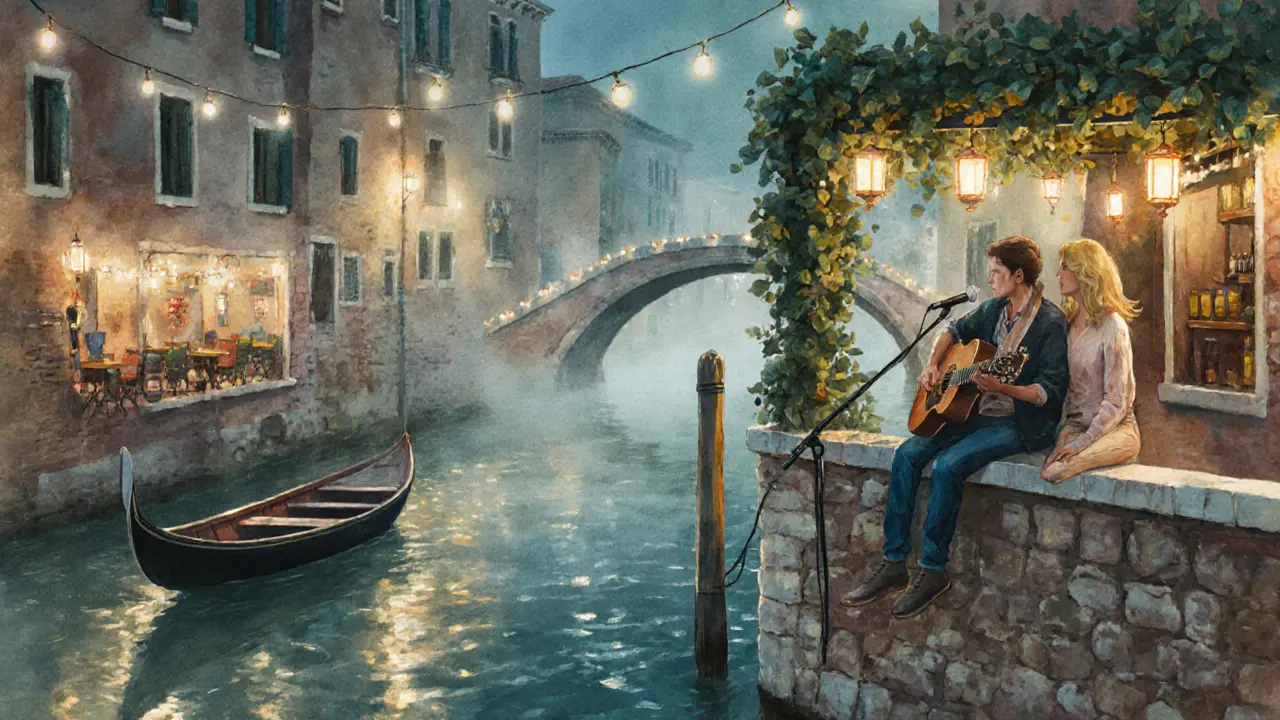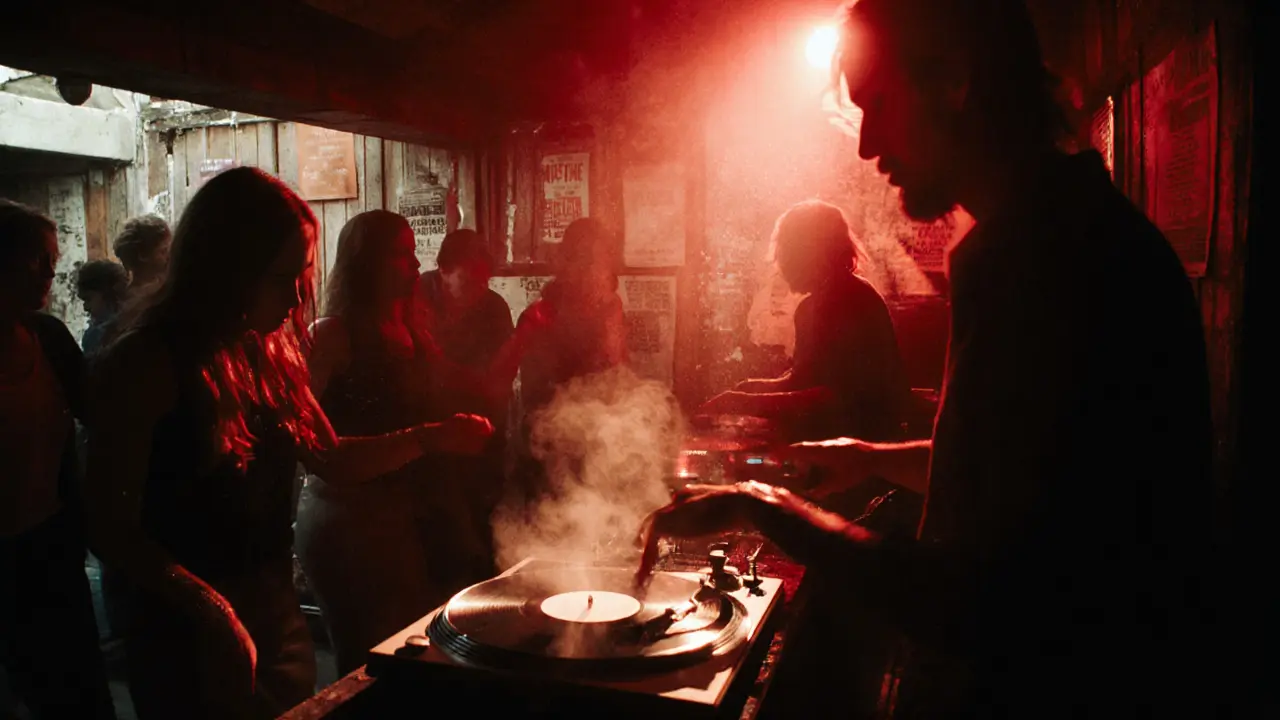Milan doesn’t sleep when the sun goes down. While it’s famous for fashion and design, the city’s real magic happens after 10 p.m. You won’t find neon-lit strip malls or tourist traps here. Instead, you’ll stumble into hidden courtyards with live jazz, rooftop lounges overlooking the Duomo, and basements where DJs spin underground techno until sunrise. This isn’t just partying-it’s an experience shaped by Milan’s energy, history, and taste.
Brera: Where Art Meets Cocktails
Brera is the heart of Milan’s cool. Narrow cobblestone streets, old bookshops, and art galleries give way to intimate bars that feel like secret clubs. Start at Bar Basso, where the Negroni Sbagliato was invented in 1972. Order one. Sip it slowly. Watch the bartenders work like artists-no recipes, just instinct. The place never feels crowded, even on weekends, because locals know it’s not about volume. It’s about quality.
Walk five minutes to La Bicocca, a tiny wine bar with 80 Italian labels you’ve never heard of. The owner pours you a glass, tells you where the grapes grew, and doesn’t charge extra for the story. This is Milanese hospitality: quiet, personal, and deeply knowledgeable.
Navigli: Canals, Craft Beer, and Late-Night Eats
By day, Navigli is a peaceful canal district with vintage shops and outdoor cafés. By night, it transforms. The water reflects the glow of string lights, and every step along the banks leads to a new bar. Beer Temple is the go-to for craft beer lovers. They rotate 20 taps weekly-local brewers from Lombardy, Belgian sours, hoppy IPAs from Turin. No gimmicks. Just good beer and a patio that stays open until 2 a.m.
Don’t miss Il Giardino Segreto, a hidden garden bar tucked behind a rusted iron gate. You need to know the password (ask at the door). Inside, you’ll find mismatched armchairs, candlelit tables, and live acoustic sets on Fridays. It’s the kind of place you’ll remember years later-not because it was loud, but because it felt like home.
Porta Ticinese: The Youth Hub
If you’re under 30 and looking for energy, head to Porta Ticinese. This is where students, artists, and young professionals blow off steam. Ex Bar is a converted warehouse with industrial ceilings, neon signs, and a playlist that jumps from Daft Punk to Italian indie rock. The drinks are cheap, the crowd is mixed, and the vibe is loose. No dress code. No attitude. Just good music and people who don’t take nightlife too seriously.
At 1 a.m., walk to La Cucina di Nonna-a 24-hour trattoria that serves arancini, pasta carbonara, and tiramisu until dawn. It’s the unofficial end to every night out. Locals eat here after clubs. Tourists eat here because they’re too drunk to walk farther. Either way, you’ll leave full and happy.

San Babila and the Rooftop Scene
For luxury and views, San Babila is where Milan’s elite unwind. Terrazza Aperol on the top floor of the Palazzo delle Scintille offers panoramic views of the city skyline. Sip an Aperol Spritz as the lights of the Galleria Vittorio Emanuele II blink on below. It’s expensive-€18 for a drink-but worth it if you want to feel like you’re in a movie.
Down the street, Bar Luce, designed by Wes Anderson, feels like stepping into a 1950s Italian film set. The bar stools are red, the tiles are green, and the espresso tastes like it’s been brewed since 1963. It’s not a club. It’s a mood. And it’s perfect for a quiet nightcap before heading home.
Underground Clubs: Where the Real Nightlife Lives
If you want to dance until your feet hurt, skip the tourist clubs. Go to Magazzini Generali, a former warehouse turned experimental music venue. They host everything from ambient techno to noise art performances. Doors open at midnight. No cover charge before 1 a.m. The crowd? Designers, musicians, and curious travelers who came here because they heard the music was different.
Another spot: Le Scimmie, tucked under a train bridge near Lambrate. It’s tiny, dark, and smells like old wood and sweat. The DJ plays vinyl-only sets from the 80s and 90s-Italo disco, post-punk, early house. You won’t find this on Spotify. You won’t find it on Instagram. You just have to be there.

What to Know Before You Go
Milan’s nightlife doesn’t start early. Most places don’t fill up until after 11 p.m. Bars open at 7 p.m., but the real action begins at midnight. Clubs don’t get busy until 1 a.m. and often don’t close until 5 a.m.
There’s no need to book tables in advance-unless you’re going to a rooftop bar on a Saturday. Walk-ins are normal. Dress smart-casual: no sneakers, no hoodies. Milan still cares about how you look. You don’t need a suit, but jeans and a nice shirt will get you further than shorts and a t-shirt.
Payment? Cash is still king in small bars. Larger clubs take cards, but always carry €20-30 in your pocket. ATMs are everywhere, but lines get long after midnight.
Public transport runs until 1:30 a.m. on weekdays and 2:30 a.m. on weekends. After that, Uber and Bolt are reliable and affordable. Taxis? Avoid them unless you’re in a group. They’re expensive and slow.
When to Visit
June to September is peak season. The weather’s warm, outdoor terraces are packed, and festivals like Milan Design Week bring in international crowds. But if you want authentic local energy, come in April or October. The summer tourists are gone. The clubs feel more real. The bars are quieter. And you’ll actually get to talk to the bartenders.
Winter? Don’t skip it. December brings cozy wine bars with mulled wine and live piano. January is quiet-perfect for exploring without crowds. February? That’s when the fashion crowd returns, and the nightlife gets electric again.
What to Skip
Stay away from Corso Como 10 if you’re not into VIP culture. It’s expensive, overhyped, and full of influencers posing for photos. Same with La Scala Night-it’s a tourist gimmick masquerading as a club. You’ll pay €50 just to get in, and the music is generic EDM.
Also avoid the area around Piazza del Duomo after 10 p.m. It’s filled with overpriced cocktail bars that target visitors. The drinks taste like syrup. The music is loud. And the service? Cold.
Milan’s best nights happen off the main streets. The real spots aren’t on Google Maps. They’re whispered about. You find them by asking a local, following the music, or just wandering.
What time do clubs in Milan usually close?
Most clubs in Milan open around midnight and stay open until 5 a.m. On weekends, some underground venues like Magazzini Generali or Le Scimmie might run until 6 a.m., especially during festivals or special events. Public transport stops running around 2:30 a.m., so plan your ride home in advance.
Is Milan nightlife safe for tourists?
Yes, Milan is one of the safest major European cities for nightlife. Violent crime is rare. Pickpocketing happens in crowded areas like Porta Ticinese or near train stations, so keep your phone and wallet secure. Stick to well-lit streets, avoid arguing with strangers, and don’t follow people into alleyways. Most locals are friendly and will help if you look lost.
Do I need to dress up to go out in Milan?
You don’t need a suit, but you should avoid sportswear. Jeans, a clean shirt, and closed shoes work for most places. Rooftop bars and upscale lounges expect a bit more polish-think blazers or stylish dresses. Clubs like Le Scimmie are relaxed, but even there, ripped shorts and flip-flops won’t get you in. Milanites care about appearance, not brand names.
Are there any free nightlife options in Milan?
Yes. Many bars in Brera and Navigli offer free aperitivo from 6 p.m. to 9 p.m.-you pay for your drink (usually €8-12) and get unlimited snacks like olives, cheese, and mini sandwiches. Some venues, like Magazzini Generali, have free entry before midnight. Walk along the canals at night-no cost, just beautiful lights and quiet music drifting from open windows.
What’s the best way to get around Milan at night?
The metro runs until 1:30 a.m. on weekdays and 2:30 a.m. on weekends. After that, use Uber or Bolt-they’re cheaper than taxis and faster. Walking is fine in central areas like Brera or Navigli, but avoid dark alleys. If you’re going to a club outside the center, book a ride ahead. Don’t rely on public buses after midnight-they’re infrequent and unreliable.



